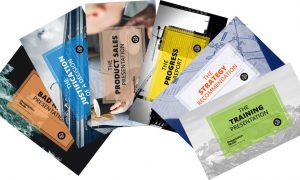The Secret to Perfecting Your Style and Delivery as a Speaker


What a seasoned public speaker brings to the stage is a collection of presentation skills. It is these skills that help the speaker connect with the audience, communicate a clear message, and make that message memorable. The best speakers can achieve all these goals plus leave their audience feeling enriched, educated, and entertained.
Being a successful public speaker requires more than just words; it requires an engaging style and effective delivery. Because it doesn’t really matter what you say if your words aren’t noticed and remembered.
So what’s the secret to going from being a talker to an iconic public speaker?
In public speaking, think of these two main components:
- Style & Delivery: Your Mindset, Body Language and Vocal Variety
- Content & Rhetoric: The Art of Using Language to Persuade and Move Your Audience
Today, we will be focusing on the first component. Most adults tend to focus on content, content and more content. Have you ever heard anybody say, “I just don’t know what I’m going to say.” or “I have to find the perfect sentence to finish this paragraph.”? Don’t get me wrong, your content matters. However, most people can’t even repeat back two sentences of what you’ve just said after a presentation.
It’s not all about what you say
People will judge you based on your mindset, body language and vocal variety before you even complete a sentence. Let me explain what I mean.
Have you ever been to the grocery store to buy apples? How did you pick them? Most people will see if the apples are bruised or not. If they look shiny and delicious, then its going in the bag. People will judge the apple by its cover. The best speakers leave their mindset on the audience. People can feel a speaker’s presence (yes, online as well!) and a speaker’s voice will turn heads. That’s your style and delivery.
How can you hold your audience’s attention by how you deliver?
Mind: You have to feel confident to project confidence
To make a great presentation, you have to be in the right state of mind. If you are nervous or uncertain about what you are saying, your audience will notice. So it is important that you continue to work to overcome your anxiousness. The more you practice speaking in public, the less nervous you’ll become.
And, to avoid appearing uncertain on the stage, choose to speak on topics you know well. You’ll also feel more confident if you speak from your heart, expressing your authentic thoughts and ideas about your subjects. People are more likely to remember your message if you speak with passion, even if your words aren’t perfect.
Here’s an exercise
- When you hear or see the word public speaking, what comes to mind? Take 2 minutes and write everything down.
- Do you like what you are writing down? If you don’t, how do you want to transform your mindset as if you were already the perfect speaker. For example: From Super Nervous -> Excited To Help The Audience.
- Write down one word that would capture this mindset. For example, my word is compelling. I want to compel with my body language, voice and mindset. What is your word?
Follow this link for more great articles on controlling your nerves.
Body: Manage your body language to send a consistent message
When people attend a speaking presentation, they are there to both see and hear the speaker. In fact, much of what you communicate to your audience will be non-verbal. As a public speaker, you should be aware of not only what your mouth is saying but what your body is doing while you are on stage.Your gestures, movements around the stage, and facial expressions are all tools that can be used to support your words.
Additionally, most people have what are called behavioral tells or cues that can reveal a lot about what they are thinking or feeling. The article 10 Behavioral Cues to Help You Separate Fact from Fiction on the DialogueWorks.com blog offers a great summary of some common tells.
You should speak authentically and from the heart to avoid sending mixed signals to your audience, too. If your body language and facial expressions conflict with what you are saying, your audience will trust their eyes more than their ears.
Try This Out
- Stand in front of a mirror and introduce yourself. Take 15 seconds. Say what you do at work and what you do in your free time. Match your body language to what you are saying.
- Remember what you just talked about. Take 15 seconds again but this time don’t say anything out loud. Go through what you’ve just said in your mind but just go through the motions with your body language. You become more visually expressive and engaging through another language – your body movements. Master comedians practise their facial expressions and body language in front of a mirror endlessly before they perform their act and research have shown that more expressive body language can help a TED talk go viral.
Follow this link for more great articles on understanding your body language.
Voice: Your voice is your instrument, play it with style
As I mentioned, people come to a presentation to both see and hear the speaker. Your voice is an important tool for conveying emotion and keeping your audience engaged. Please don’t drone on in a monotone voice for your entire presentation. Without vocal variation, much of your audience is likely to tune you out or even fall asleep. Using a loud or energetic voice throughout your presentation probably isn’t the best plan either. Your audience may stay awake, but they’ll be mentally exhausted.
Instead, think of your voice as an instrument. Use high and low tones and adjust the volume to create a vocal composition that leads your audience through your presentation. When you practise your speech, practise these vocal variations too.
Download This:
- Vanido – Your Personal Singing Coach (They didn’t pay me to advertise them.) This free app is one of the best ways to work on your vocal variety and I use it all the time. If you don’t like this app, download another voice or singing app!
Follow this link for more great articles on using your voice.
Putting it all together in a singular presentation
One of the most exciting things about speaking to a live audience is that the presentation you make at that moment is one of a kind. Your feelings about the topic, your mental preparedness, the gestures, movements, and tone of voice you choose are for that audience in that moment. It is this unique combination that makes each professional presentation special.
So, practise not only what you will say but how you will say it and put those nervous thoughts out of your mind. That’s the secret to perfecting your delivery and style as a speaker.
If you’d like to see me practice my vocal variations and learn more tips to perfect your style and delivery, check out my video at Business Town, How to Be a Kick-ass Public Speaker. This video will make you smile, I promise.















